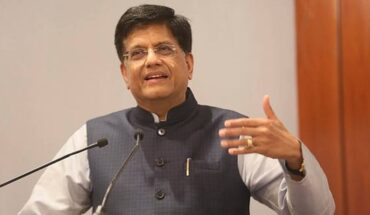Indian Oil Corporation sold petrol at a loss of Rs 10 per litre and diesel at Rs 14 a litre during April-June, leading to the firm reporting its first quarterly net loss in over two years, a report said.
The nation’s largest oil refining and fuel retailing firm reported a net loss of Rs 1,992.53 crore in April-June compared to Rs 5,941.37 crore of net profit in the same period a year back and Rs 6,021.9 crore in the preceding January-March quarter.
“IOC (Indian Oil Corporation) reported an 88 per cent year-on-year decline in its standalone EBITDA to Rs 1,358.9 crore and a net loss of Rs 1,992.5 crore, despite record high gross refining margins (GRMs) of USD 31.8 per barrel for the quarter.
“Earnings decline was driven by a sharp fall in retail fuel margins for petrol and diesel with an estimated net loss of Rs 10 per litre for petrol and Rs 14 a litre for diesel for the quarter and inventory loss of Rs 1,500-1,600 crore due to excise duty cut in the quarter,” ICICI Securities said.
While fuel retailers are supposed to revise petrol and diesel prices daily in line with cost, IOC and other state-owned firms Bharat Petroleum Corporation Ltd (BPCL) and Hindustan Petroleum Corporation Ltd (HPCL) kept prices on hold despite a rise in input cost.
The basket of crude oil India imports averaged USD 109 per barrel, but the retail pump rates were aligned to about USD 85-86 a barrel cost.
This is the first quarterly loss in over two years. The company had reported a net loss in January-March 2020, but that was on account of inventory losses on processing costlier crude.
“While GRMs have come off post the Q1 highs to levels of USD 11.8 per barrel (a low of USD 0.8 per barrel was reached in the third week of July), marketing margins have improved owing to lower product prices. Therefore, we do factor in lower losses for FY23 (April 2022 to March 2023) and GRMs sustaining at USD 17-18 per barrel levels over the full year,” ICICI Securities said in the report.
Typically, oil companies calculate a refinery gate price based on import parity rates. But if the marketing division sells it at prices less than import parity, losses are booked.
State fuel retailers are supposed to align rates with an international cost every day. But, they have periodically frozen prices before crucial elections.
IOC, BPCL and HPCL stopped revising rates ahead of assembly elections in states like Uttar Pradesh last year. That 137-day freeze ended in late March, with prices being raised by Rs 10 per litre each before another round of freeze came in force in early April.
This is despite international oil prices soaring to multi-year high on supply concerns following Russia’s invasion of Ukraine.
The government in May cut excise duty on petrol and diesel, which was passed on to consumers instead of being used to square off mounting losses on the two fuel sales.
The current freeze on petrol and diesel prices, excluding the reduction due to a cut in excise duty, is now 116 days old.





